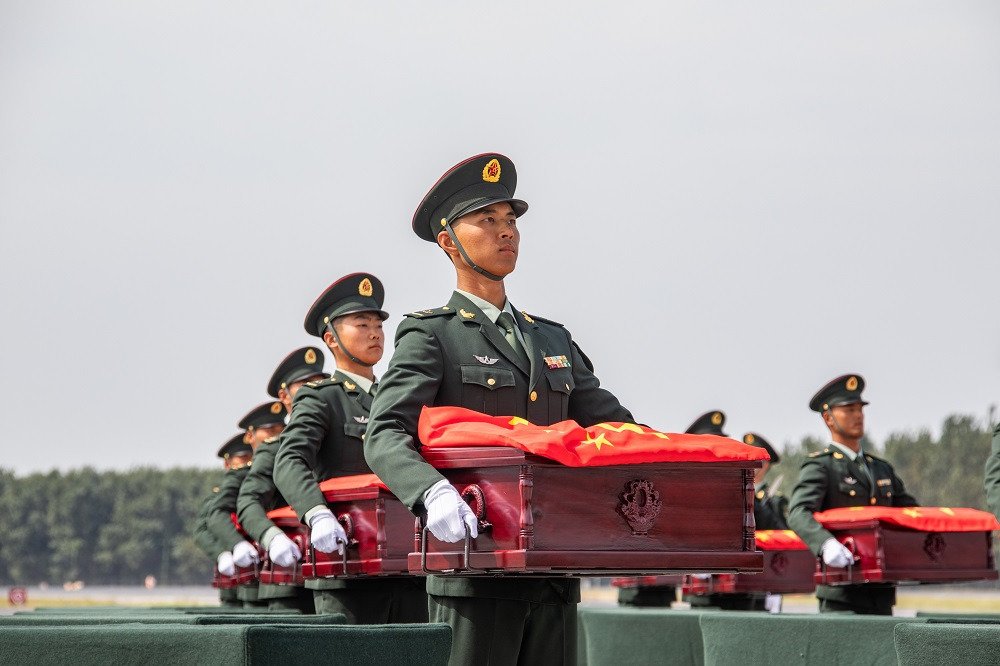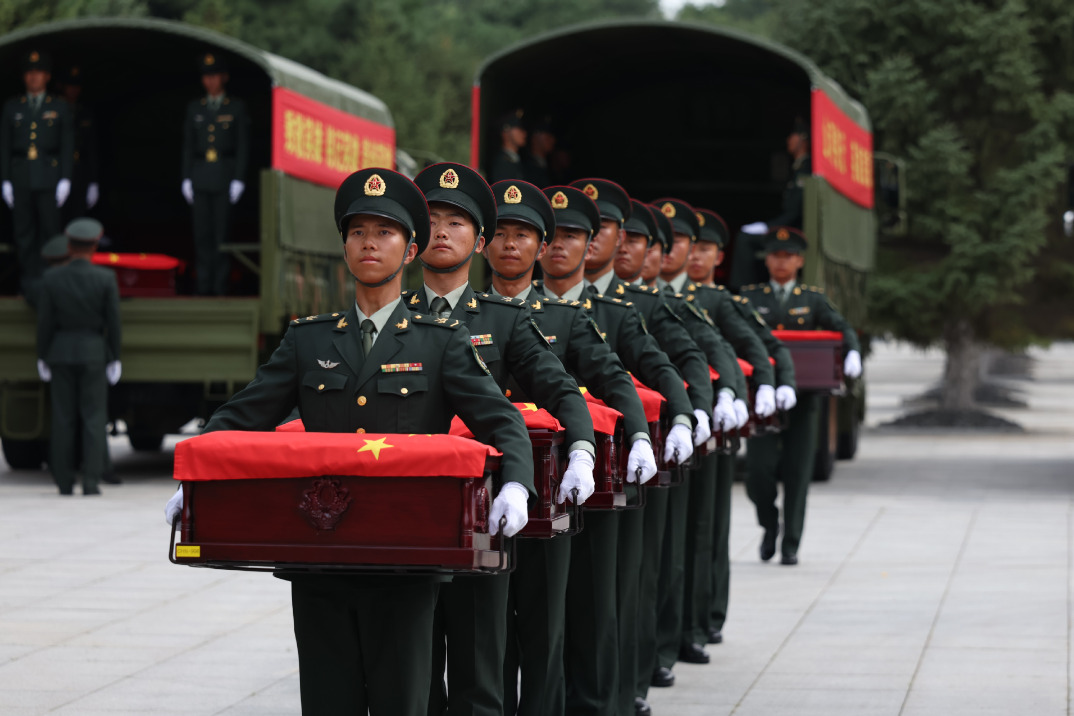Disorderly conduct


US is using its 'Indo-Pacific strategy' to sabotage stability in the Asia-Pacific
The strategic competition between China and the United States is heating up. The US is vigorously promoting a 2.0 version of its "Indo-Pacific strategy" and trying to encircle and contain China through values-based diplomacy and alliance-based diplomacy.
The Joe Biden administration views NATO as the most important strategic resource to ensure the US' global hegemony. It is striving to push NATO to intervene and assert itself in Asia-Pacific affairs. As the de facto leader of the NATO alliance, the US is urging its European allies to align their policies toward China with it and strengthen security cooperation with its allies in the Asia-Pacific region. At its summit in Madrid in June, NATO unveiled a new strategic concept, which clearly stated that it would expand the security organization to the Asia-Pacific region. And, for the first time, the Republic of Korea, Japan, Australia and New Zealand were invited to attend the NATO summit. In fact, NATO's expansion in the Asia-Pacific region is the inevitable result of keeping pace with the strategic adjustment of the US' "Indo-Pacific strategy", and will certainly increase regional tensions.
The US has persuaded the ROK and Japan to improve their relations in order to activate a trilateral mechanism. The US has also formed a pure military mechanism — AUKUS with the United Kingdom and Australia. It has also upgraded the US-Japan-India-Australia Quadrilateral Security Dialogue to a leaders' summit and expanded the areas of cooperation. In addition, it is seeking to expand the "Five Eyes" intelligence network of the five "Anglo-Saxon countries" with the addition of new members.
In the economic field, the US has launched its "Indo-Pacific Economic Framework for Prosperity "initiative in a bid to integrate the "Indo-Pacific region" economically under its leadership, establish new regional economic and trade rules to restrict China, and weaken and offset the regional impact of the China-proposed Belt and Road Initiative.
The US is also using the so-called resilience and security of supply chains as an excuse to make all participants in the IPEF reduce their dependence on China in their supply chains and even completely "decouple" from China. At the same time, it is trying to cut off China's access to advanced technologies and products, especially semiconductors.
The decline of China-US relations will inevitably affect the policies of other major Asia-Pacific countries toward China, especially Japan and India. As the current Japanese government is resolutely cooperating with the US' "Indo-Pacific strategy", the antagonism in China-Japan ties has been growing.
China-India relations continue to waver between cooperation and confrontation. The US has taken the opportunity to increase its arms sales to India and strengthened US-India intelligence cooperation and military drills, thus driving up the risks of confrontation between China and India.
Tensions on the Korean Peninsula are rising again. The new ROK government and the US have reached agreement on a tough approach to what they allege is the Democratic People's Republic of Korea's "provocative behavior". The US and ROK resumed their joint military drills that have been suspended for four years, and held the Ulchi Freedom Shield exercise that exceeded their previous military drills and exchanged views on the "Extended Deterrence Strategy" for the first time over the past five years. The DPRK conducted several missile tests after the ROK's new president Yoon Suk-yeol took office.
Tensions in the Taiwan Straits are mounting. The US has substantially boosted its political relations and defense cooperation with the Taiwan authorities on the grounds that, in accordance with the so-called Taiwan Relations Act and the Six Assurances to Taiwan, it needs to attach greater importance to its security commitments to the island. During the Joe Biden administration, the US has already sold arms to Taiwan six times.
Since the outbreak of the conflict between Russia and Ukraine, there have been a series of visits to Taipei by US lawmakers, most provocatively by US House Speaker Nancy Pelosi in early August. Her visit has heightened the sensitivity of the Taiwan question. In response, the Chinese People's Liberation Army launched missiles into waters near Taiwan and conducted military exercises around the island for several days. At the beginning of September, the US announced a $1.1 billion military sale to the island on the pretext of strengthening the latter's defense capability, the largest US arms sales to Taiwan since Joe Biden took office.
Besides the traditional security risks, there are also non-traditional security risks in the Asia-Pacific region that have also become increasingly prominent, especially the energy and food security threats. Due to the Russia-Ukraine conflict and the severe sanctions imposed on Russia by the US and Europe, international energy prices are soaring. Global coal and natural gas prices have risen by more than 100 percent. The continuous increase of energy prices may even lead to the interruption of nearly one-third of global oil and gas supply. In terms of food security, the Russia-Ukraine conflict has disrupted the global supply chain and the grain imports of many countries have been damaged.
The strategic competition between China and the US is unavoidably affecting the security situation in the Asia-Pacific region and the prospects for regional cooperation. Small and medium-sized countries represented by the members of the Association of Southeast Asian Nations have to carefully formulate their policies.
For the members of the Association of Southeast Asian Nations, first of all, they must face up to the fact that the competition between major countries may lead to differences within ASEAN. For example, there are different voices about AUKUS.The Philippines, Singapore and Vietnam support it, while Indonesia and Malaysia oppose it. At present, ASEAN must do its utmost to maintain internal unity, which is the cornerstone of maintaining its "core status" in the regional security architecture.
Second, cooperation should be enhanced among ASEAN countries to jointly address current risks and challenges. Recently, Indonesia, the Philippines and Malaysia have boosted cooperation in the security and economic fields, trying to get rid of the interference of big powers and handle major issues of regional security and economic growth on their own.
Finally, the central status of ASEAN in the region should be safeguarded. The association promotes the implementation of the "ASEAN Outlook on the Indo-Pacific", adheres to the balanced diplomacy of major countries, and avoids the dilemma of making a binary choice between China and the US.
Confronted with the complex and challenging international situation, China has successively put forward the Global Development Initiative and the Global Security Initiative to further promote the enhancement of regional governance.
In terms of security, China advocates common, comprehensive, cooperative and sustainable Asian security, and seeks to fit in with ASEAN's long-term comprehensive security concept. China also adheres to the complementarity between traditional and non-traditional security governance. In terms of economic governance, China holds high the banner of globalization, adheres to open regionalism, and promotes regional cooperation in the Asia-Pacific.
The author is an assistant researcher at the National Institute of International Strategy, Chinese Academy of Social Sciences. The author contributed this article to China Watch, a think tank powered by China Daily.


































